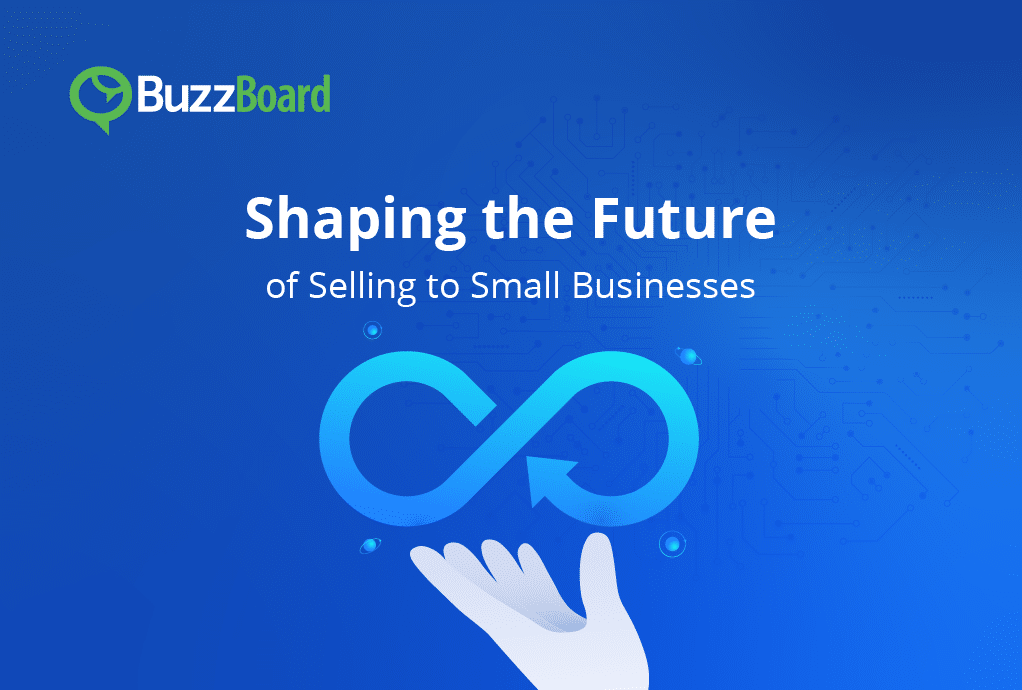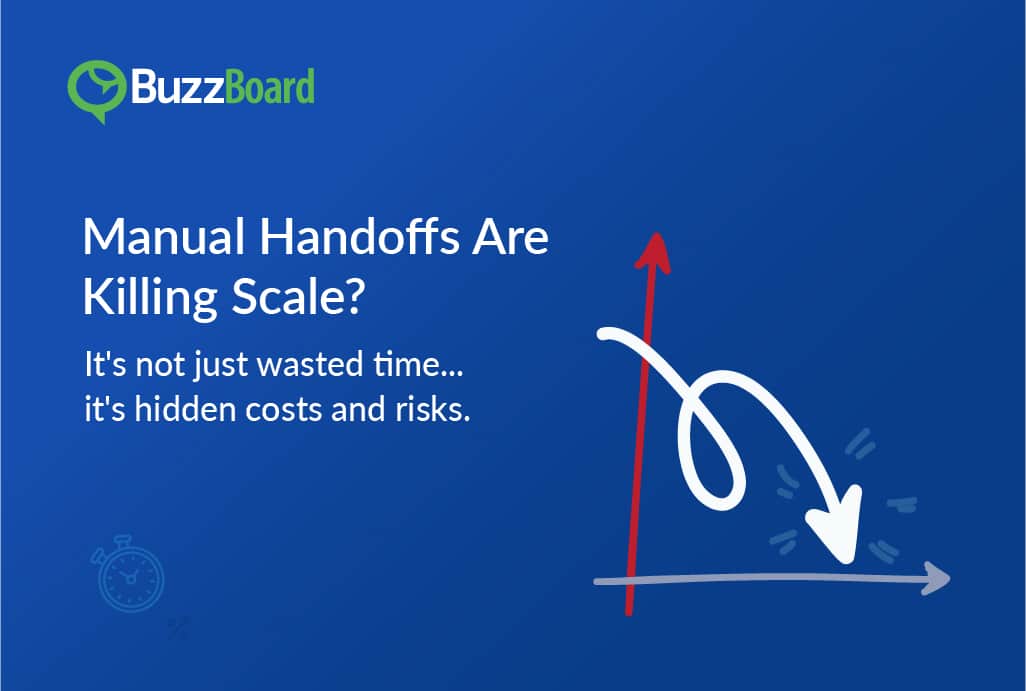Selling to small businesses carries the hallmark of innovation, personalization, and a focus on delivering tangible value in every interaction or touchpoint. This means that SMB prospecting has to constantly play catch-up and undergo profound transformations, fueled by advancements in technology, shifting market dynamics, and evolving buying behaviors. It is a classic dichotomy of opportunities and new challenges, both evolving at break-neck speed but where the rewards are many.
For sales professionals, this means more than just a basic understanding of the client business—sales efforts demand anticipation of small businesses’ current needs and future aspirations. Behind every SMB lies a unique story of resilience and ambition, shaped by trends like digital transformation, sustainability, growth, and the rise of hybrid work models. These, indeed, are the forces reshaping how small businesses operate and thrive. Companies that can align with these shifts, offering solutions to SMBs that are both visionary and practical, will not just survive but lead in this dynamic space.
Let us explore some key shifts and ground realities that are shaping the future of selling to small businesses.
The Evolving SMB Buyer Journey
The small business buyer journey is transforming, reflecting changes in technology, behavior, and expectations. Here’s a closer look at the key aspects shaping this evolution:
1. Impact of Digital Transformation
SMBs now rely heavily on digital tools for decision-making. With access to reviews, product comparisons, and educational resources online, SMBs often form opinions before engaging vendors.
2. Hybrid Buying Experiences
The traditional sales cycle is fading, replaced by a blend of self-service, digital research, and occasional direct interactions. SMBs expect sellers to seamlessly support this hybrid approach.
3. Key Customer Touchpoints
From discovery on search engines and social media to product trials/free consultations and post-purchase support, every stage of the SMB journey now demands personalized engagement and value-driven interactions.
4. Role of Self-Service and Digital-First Interactions
Self-service tools, like chatbots and FAQs, empower SMBs to make quick, independent decisions. B2SMB companies must ensure these options are user-friendly and comprehensive.
5. Changes in Decision-Making Timelines
Shorter timelines and increased stakeholder involvement mean sellers need to present clear value propositions and cater to diverse decision-makers within the SMB.
AI and Automation in Prospect Identification and Qualification
The future of hyper-personalization will witness an advanced integration of generative AI. As AI technologies continue to evolve, businesses that sell to small and local enterprises will have access to more sophisticated algorithms. Plus, these algorithms will enable the creation of hyper-personalized content at a scale and depth previously unseen, ensuring a more profound impact on target audiences.
Predictive Algorithms for Identifying High-Potential SMB Prospects
Modern prospect identification leverages sophisticated AI algorithms to analyze vast datasets and identify high-potential SMB clients. Unlike traditional methods that rely heavily on firmographic data, such as industry, location, or size, predictive models incorporate behavioral patterns and contextual signals to paint a more accurate picture of prospect readiness.
These algorithms analyze data points such as website activity, content downloads, and engagement across digital channels to identify SMBs actively searching for solutions. They also factor in industry-specific qualification criteria, tailoring the scoring process to the unique dynamics of each market. By going beyond surface-level data and tapping into nuanced behavioral and industry-specific indicators, predictive algorithms empower businesses to prioritize leads that align with their offerings and are most likely to convert.
A critical success factor in AI implementation is maintaining the right balance between automated insights and human judgment. While AI systems excel at pattern recognition and data analysis, successful agencies typically implement regular review processes to understand and refine the AI’s decision-making criteria. This feedback loop helps optimize the system’s performance while ensuring alignment with business objectives.
For agencies or consultancies new to AI-powered prospecting, experts recommend a strategic, stepped approach:
- Begin with basic firmographic data analysis
- Gradually incorporate behavioral signals
- Implement regular performance reviews
- Scale successful elements
- Continuously refine targeting criteria
AI-Powered Tools for Lead Enrichment
AI-powered tools are transforming lead enrichment by automating the collection and analysis of critical prospect data, giving sales teams deeper insights to craft tailored approaches. These tools gather business intelligence from a variety of sources, including public records, industry databases, and online activity, to build comprehensive profiles of potential SMB clients.
Advanced prospecting and sales tools have revolutionized lead scoring by incorporating both explicit and implicit data signals. These advanced systems can now detect buying readiness through digital maturity and behavior analysis—website infrastructure maturity, social profiles, and content creation patterns. This capability allows agencies to focus their resources on prospects most likely to convert.
For example, social media signal analysis enhances this process of insights-based lead enrichment and scoring by monitoring mentions, interactions, and engagement patterns on platforms like LinkedIn or Twitter. This real-time data provides valuable insights into an SMB’s priorities, challenges, and current interests, enabling sellers to connect on a more meaningful level.
Financial health indicators and growth markers, such as credit scores, recent funding rounds, or expansion announcements, add another layer of precision. By identifying SMBs with strong financial stability or those undergoing significant growth, AI tools help sales teams focus on prospects with the highest potential for long-term partnerships.
Machine Learning for Lead Prioritization
The true power of machine learning in lead prioritization extends beyond basic customer profile matching. Research indicates that SMBs exhibiting specific digital behaviors, such as website updates or increased social media activity, are three times more likely to convert into clients. This behavioral pattern recognition has become a crucial element in modern lead-scoring systems.
By analyzing historical data from successful engagements, these systems can predict which prospects are most likely to become valuable long-term clients. The technology considers factors such as budget capacity, growth trajectory, and digital maturity levels.
Sales readiness indicators, such as digital footprint growth rate, recent hiring activity, product launches, or significant market movements, are also incorporated into these algorithms. By identifying these signals, machine learning helps sales teams time their outreach perfectly, increasing the chances of a successful conversion.
Personalization at Scale for SMB Markets
Because small businesses thrive on personal connections and reaching them isn’t about mass marketing, it is personalized experiences that can cut through the noise.
Why Personalization Is So Much Promising?
Personalization or rather hyper-personalization offers relevance, authenticity, and a sense of connection that resonates deeply with small businesses.
Personalization… How?
Well, It starts with truly understanding each small business on a deeper level. Grasp the culture that drives them, the community they serve, their operational nuances, strategic ambitions, and even the obstacles holding them back. This isn’t about generic templates or canned approaches; it’s about tailoring your pitch, your solution, and even your follow-up to make them feel like you understand their world. In a competitive landscape, this level of precision and alignment is what differentiates impactful sales strategies from the rest.
B2SMB or SMB-focused companies can combine the following techniques to effectively scale personalization efforts:
- Micro-vertical targeting strategies focus on addressing the unique needs of niche industries within the SMB market, ensuring that messaging and solutions resonate on a granular level.
- Data-driven personalization techniques leverage analytics and AI to create highly customized outreach, from tailored email campaigns to product recommendations aligned with an SMB’s specific pain points.
- Account-based marketing (ABM) adapts these strategies for small business segments, delivering bespoke experiences to high-value prospects while optimizing resources.
- Customization of service packages based on business size further enhances personalization. Flexible pricing models, scalable features, and modular offerings ensure SMBs feel that solutions are designed specifically for their operations.
- Industry-specific messaging and value propositions add another layer of relevance, emphasizing how products or services directly address sector-specific challenges and opportunities.
Pro Tip: The future of hyper-personalization will see generative AI take center stage in dynamic content creation. This means the ability to generate personalized content in real time, adapting to user interactions and evolving preferences. For agencies selling to small businesses, this translates into more engaging and relevant content that captures the attention of their audience.
The New SMB Sales Communication Stack
The SMB sales communication stack has evolved to meet the changing expectations of small business buyers, emphasizing agility, personalization, and accessibility. Multi-channel engagement strategies ensure that sales professionals connect with SMBs across platforms like email, social media, and messaging apps, including in-person interactions. This approach creates a seamless and consistent buyer experience.
Video messaging and asynchronous communication are becoming essential tools, allowing sellers to deliver engaging pitches and product demonstrations that SMBs can access on their own time. These formats cater to busy SMB owners while fostering a more human connection.
Social selling techniques are another cornerstone, leveraging platforms like LinkedIn and Instagram to build relationships, share valuable content, and engage with prospects in a non-intrusive manner. For SMB markets, this strategy helps sellers meet buyers where they already spend their time.
Mobile-first communication approaches reflect the increasing reliance of SMB owners on smartphones for business operations. Optimized emails, text-based updates, and mobile-friendly interfaces ensure smooth communication on the go.
Finally, the integration of chatbots and conversational AI provides 24/7 support and instant responses to queries, creating an always-available channel for engagement. These tools enhance efficiency and address SMB needs promptly, improving satisfaction and trust.
Together, these elements create a dynamic communication stack that aligns with the needs of modern SMB buyers while supporting effective and scalable sales interactions.
Economic Factors Shaping SMB Buying Decisions
Economic uncertainty plays heavy in SMB purchasing behavior, leading to a more careful evaluation of marketing investments. Successful agencies are responding by offering clear ROI projections and flexible payment terms.
Budget allocation patterns show a clear shift toward digital marketing services, with SMBs increasingly prioritizing online presence and digital customer acquisition. This trend has accelerated post-pandemic—“… 58% of small businesses use digital marketing, and nearly all plan to invest more of their marketing budgets into it. Additionally, 63% are spending the most on social media.”
While opportunities are on the rise for marketing services, risk mitigation has also become a central concern for SMBs. The way forward is to lean more heavily on performance-based pricing models and well-defined service-level agreements. Agencies and media companies that can demonstrate clear value propositions and guaranteed results are gaining competitive advantages.
The emphasis on measurable outcomes has never been stronger, with SMBs requiring detailed reporting and analytics to justify marketing investments. Successful agencies are responding by implementing comprehensive tracking systems and regular performance reviews.
Navigating the Future: Implications for Sales Professionals
1. Emphasis on AI Education and Training
As the future of hyper-personalization becomes increasingly intertwined with generative AI, sales professionals must invest in AI education and training. Understanding the capabilities and limitations of these technologies will be crucial for effectively communicating their value to small and local businesses.
2. Adapting Strategies for Local Markets
Agencies selling digital marketing products and services to small businesses should adapt their strategies for local markets. The future demands a deep understanding of local trends, preferences, and cultural nuances. Hyper-personalization will be most effective when aligned with the unique characteristics of each local market.
3. Embracing Innovation in B2SMB Solutions
Innovations in B2SMB solutions will be at the forefront of hyper-personalization for small businesses. Sales professionals should keep a close eye on emerging technologies and trends, positioning themselves as experts in delivering innovative solutions tailored to the specific needs of small and local enterprises.
Success in 2025 and beyond will depend on your agency’s ability to adapt to the above changes we’ve discussed while maintaining the personal touch that SMBs value. Do remember, the integration of advanced generative AI, the focus on enhanced localized experiences, and the innovation in B2SMB solutions aligned with sales communication and economic factors will reshape the digital marketing landscape.









